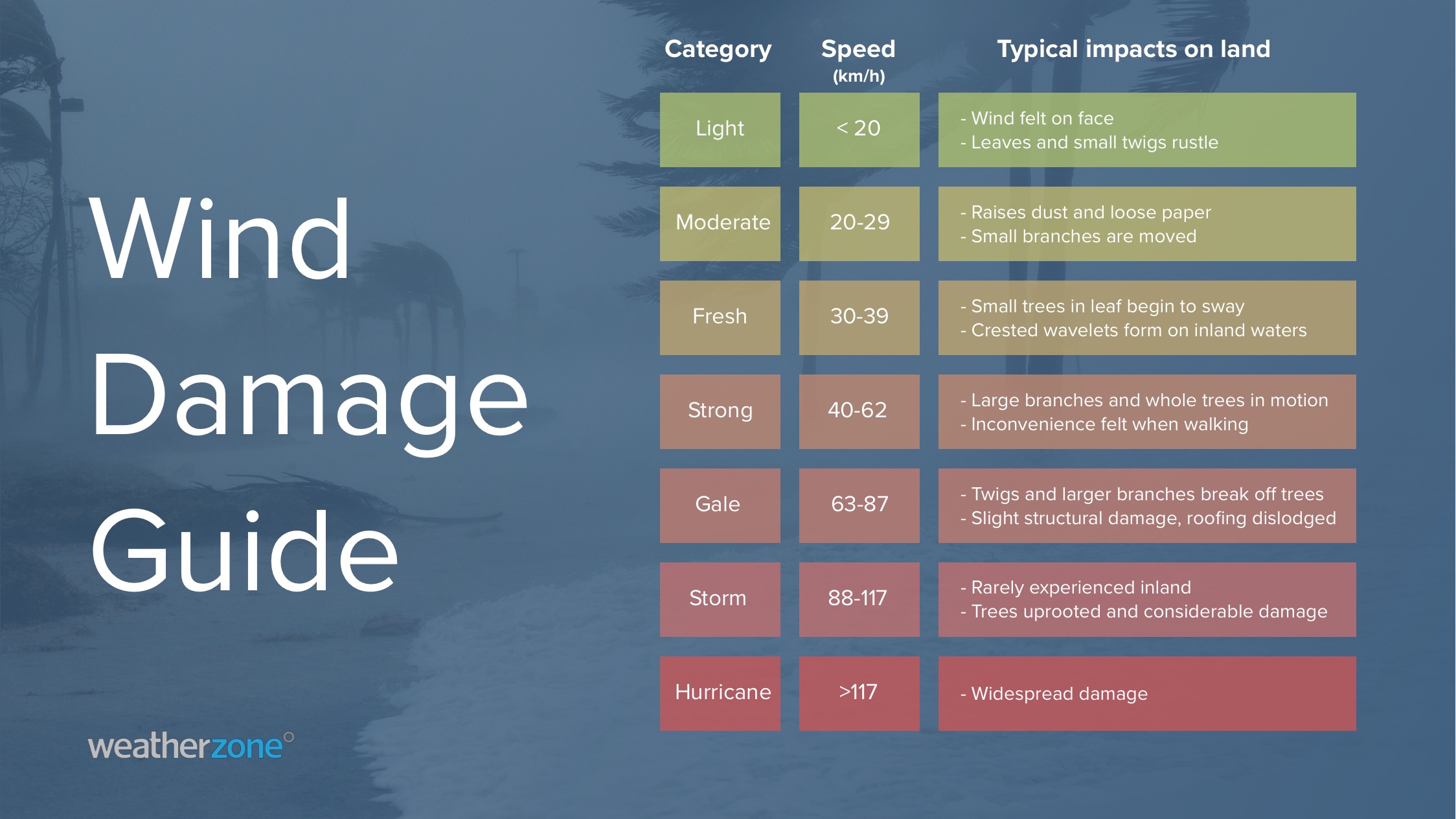Wind explained: What are gales and how strong are strong winds?
Parts of Australia are likely to experience damaging winds later this week. But what classifies as a damaging wind gust in Australia, and what is the difference between strong winds, gale force winds and a blizzard?
Wind refers to the movement of air across the surface of Earth. While wind is often perceived as a constant flow, it typically occurs in gusts and lulls.
Wind speeds in Australia are reported in two ways:
- Mean wind speed – the wind speed averaged over 10 minutes at a height of 10 metres above the ground
- Wind gusts – A sudden increase of wind over a short duration, typically only a few seconds
The wind speeds that are mentioned in your local forecast refer to the mean wind speed, while wind gusts are typically referenced in severe weather and severe thunderstorm warnings. As a rule of thumb, wind gusts over open water can be up to 40 percent stronger than the mean wind speed.
Wind speed in Australia is measured in kilometres per hour (km/h) or knots (kt). The table below shows the wind speed categories used in Australia, and the associated impacts that would typically occur for each category.

The Bureau of Meteorology will issue warnings for damaging winds for the following:
- Sustained wind speeds of gale force (63 km/h) or more
- Wind gusts of 90 km/h or more on the Australian mainland
- Wind gusts of 100 km/h or more in Tasmania
Blizzards refer to conditions that are caused when strong winds occur at the same time as falling or blowing snow, reducing visibility to less than 200 metres.
So, next time someone says, “it’s blowing a gale”, you can check the latest warnings to see if they are right.